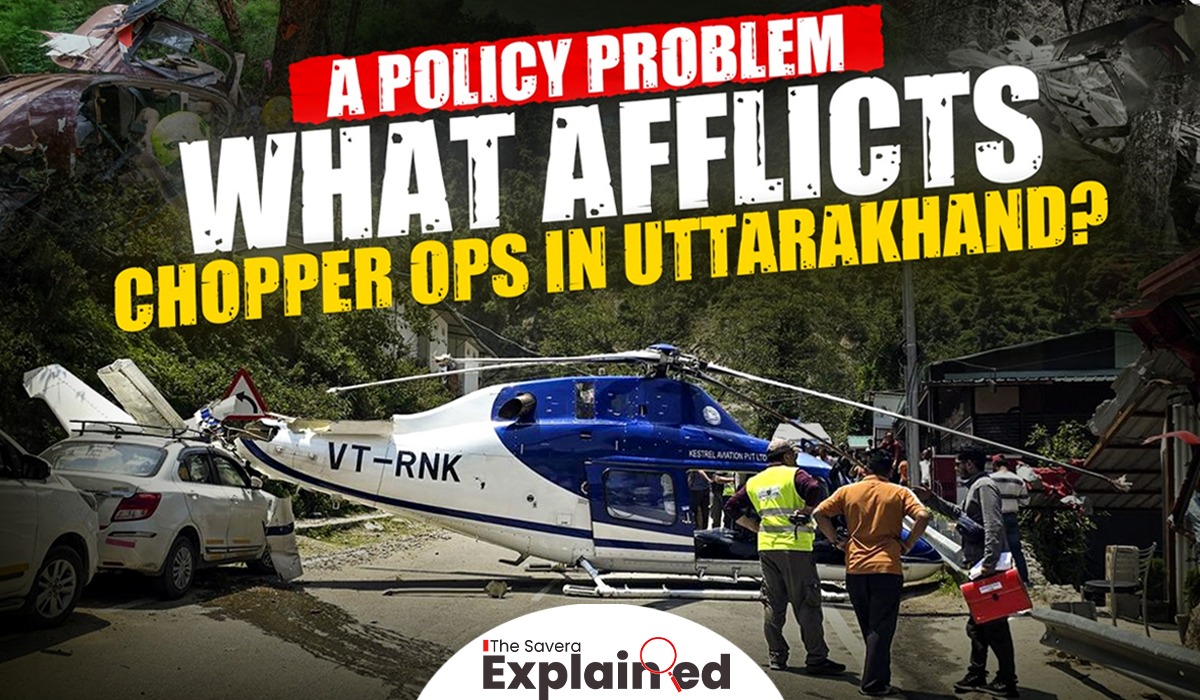
Seven people including an infant, died after their helicopter flying from Kedarnath crashed near Gaurikund in Uttarakhand on Sunday amid bad weather.
The incident took place just weeks after five passengers and the pilot were killed when their chopper plunged into a gorge while flying to Gangotri in May.
Such accidents have put private helicopter operators, especially those operating during the Char Dham pilgrimage seasons between May and June, and September and October – in Uttarakhand under the scrutiny of the Directorate General of Civil Aviation (DGCA), the regulatory body for civil aviation in India.
After the incident on Sunday, Aryan Aviation, which operated the helicopter that crashed, has been stopped from flying Char Dham routes. Two helicopter pilots, working for a different private operator, have been suspended for six months for flying in “un-suitable weather conditions”.
Rules for private operators
The Uttarakhand Civil Aviation Development Authority (UCADA), a government body established in 2013, oversees the operations of private helicopter operators in the state. There are around 20 such operators in Uttarakhand at the moment, according to UCADA CEO Sonika.
The UCADA has laid down terms for private players operating on these routes.
These include the following:
Note that UCADA is not liable for any consequences arising out of any accident involving helicopters flown by private operators.
The problem Experts suggest that these terms and conditions are at the heart of what make helicopter rides dangerous in Uttarakhand.
For instance, the royalties imposed on landing and capping of ticket prices (which are meant to be on par with pony rides), private operators race to complete the as many sorties as possible to maximise profits.
Veteran aviator Cdr K P Sanjeev Kumar told The Indian Express: “In a region already loaded with capricious weather that pushes man and machine to its limits, unreasonable contractual clauses, extortionate landing charges, and royalties are imposed on helicopter operators in the Char Dhams by UCADA. This incentivises unsafe flying and maintenance practices.”
He added that the Chardham flying window “is already narrow” on top of which “authorities penalise operators for withdrawing services or grounding aircraft for maintenance” creating “pressure to fly even in ad-verse conditions…”
There are also certain specific concerns around the Kedarnath helipad, which is maintained by UCADA. The helipad is used primarily for seasonal shuttle operations during the pilgrimage.
But despite recommendations by the Aircraft Accident Investigation Bureau, it lacks navigation aids and an air traffic control facility, and very high frequency radio waves are used for communication which can be blocked by the mountains.
The Kedarnath Valley also lacks a meteorological facility with qualified personnel. As a result, pilots do not have access to accurate in-formation about the weather.
Recent Aviation Incident in Uttarakhand
May 8, 2025: Helicopter Crash near Gangnani, Uttarkashi
June 7, 2025: Kestrel Aviation Emergency Landing
